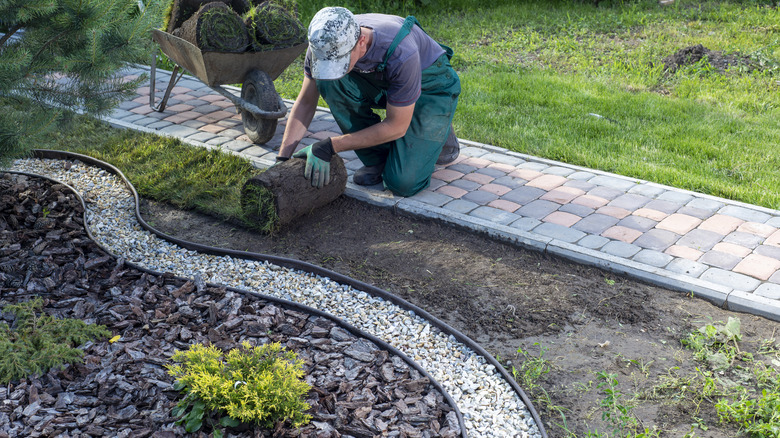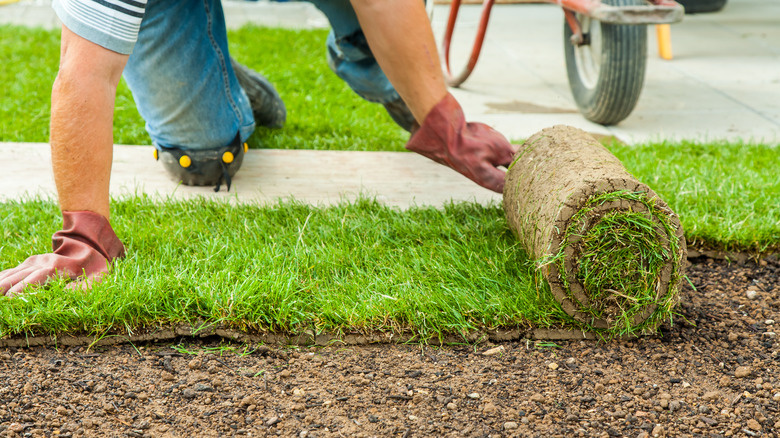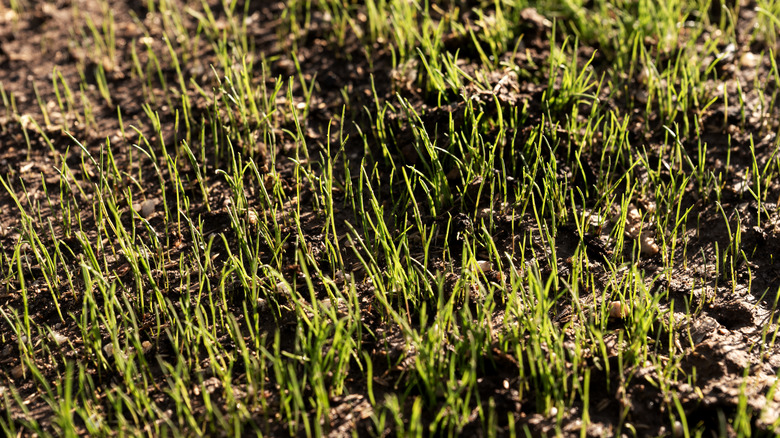Wanting To Start A New Lawn Over Your Existing Lawn? Here's How
If you want to start over with your lawn, start by evaluating its condition. If there are only a few patches of unhealthy grass, consider aeration and overseeding. This involves making holes in the ground so new seeds can have direct contact with the soil while the soil breathes and gets the chance to regain its health. If most of the lawn is dead, full of weeds, or has bad drainage and soil issues, then it's best to remove everything and start over completely.
There are two options for starting from scratch over your existing lawn — seeding or sodding. Sodding involves transplanting mature grass while seeding involves planting new grass. Sodding produces quick results and can be laid when you want, but is an expensive process that lacks variety in grass styles. Seeding comes with many grass options and is more affordable, but it's a slower process that can only be started around late summer and early fall.
Sodding
Start by preparing the area. If there's any vegetation left, you can use a non-selective herbicide to kill the grass and weeds. Follow the manufacturer's instructions carefully and give it enough time to take effect. Another method is to dig out the lawn and let the sun take care of any weeds, pests, and bacteria. After this, use a sod cutter or similar tool to remove the old sod. Removing everything down to the sod is crucial so the roots of your new lawn can reach the soil without the barrier of the old sod. Next, remove any other debris and rake the surface to loosen the top layer of soil.
Whether sodding or seeding, it's good to test the soil to determine its pH level and nutrient content. This will help you understand if there are any soil amendments — like manure or compost — you can add before continuing the process. When your soil is ready, rake the surface to level it out so the new lawn is smooth and even, then lay the sod. Water lightly several times throughout the day for the first two weeks to keep the underneath surface wet, and then cut back so the roots can get strong.
Seeding
To start a new lawn over your existing lawn by seeding, kill any remaining grass and weeds and remove old sod as outlined above. Then, turn the soil over mechanically or by hand. Allow it to settle for two weeks and keep it watered during this time. Next, fertilize the soil — now your lawn is ready for the new grass seed. Get the best quality seeds for your climate and sow and spread them evenly. Use a seed spreader so they have the right distance and space, and avoid sowing on windy days.
Tread or roll the seeds into the soil so they make optimal contact and keep the soil consistently moist until the new grass establishes itself. Watering twice a day is ideal so the seed stays wet. The seeds should sprout in two to three weeks and you can start mowing the grass at 3 to 4 inches. Make sure to maintain a regular lawn care routine with watering, mowing, fertilizing, and clearing weeds.


